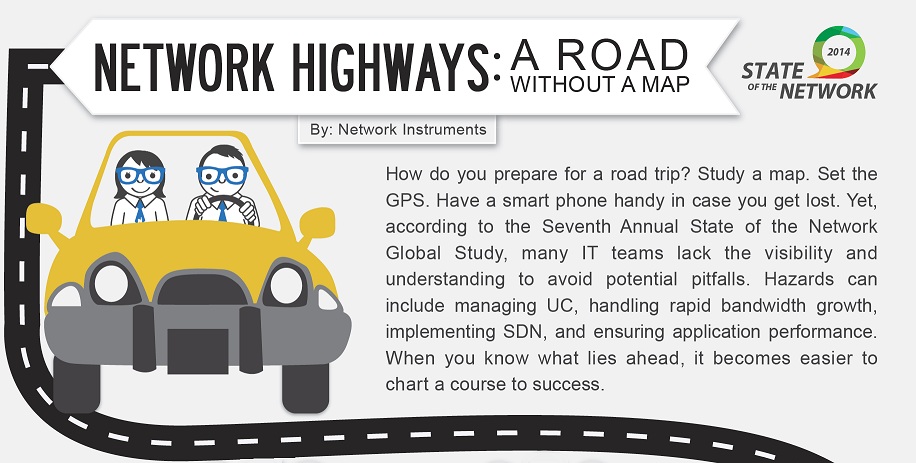
It is no surprise that in this year's State of the Network annual survey of network professionals, Software-Defined Networks (SDN) was the prevailing topic. Yet in 2009, it wasn't even on the radar. And while SDN is all the buzz, this year's survey showed that not everyone is on the same page. In fact, when asked to define SDN, 37 percent of the network managers and engineers defined SDN as being "like a road trip without a map".

Click on picture to download a PDF of the State of the Network infographic
While no clear definition of SDN could be agreed upon, it was very clear that SDN has IT talking, with 12 percent regarding SDN as critical.
The survey also showed that IT departments are at odds with each other as to how important SDN is to a company and why. About 47 percent, nearly half, of network management did not think SDN was important, while more than half of network engineers said they'd just ride out the hype.
That being said, adoption amongst participants is projected to grow at a steady pace from the 12 percent of early adopters today, to 22 percent of respondents indicating they will have SDN in place by the end of 2014 and 32 percent by the end of 2015.
Why? Because SDN is not just about cost reduction — it's about making an organization agile. The top drivers of SDN cited in the State of the Network survey included the need to improve the network's ability to dynamically adapt to changing business demands (48 percent) and to deliver new services faster (40 percent). Others indicated lowering operating expenses, decreasing capital expenses, improving the ability to provision network infrastructure and designing more realistic network infrastructures as reasons behind SDN deployment.
With the many major initiatives IT is juggling, such as Big Data, Cloud services, Unified Communications (UC), Bring Your Own Device (BYOD) and 40Gb deployment, it is no wonder that IT departments have SDN in their sights. Whether network professionals can define it or not, many are rapidly deploying SDN while others seem to be evaluating what is hype vs. tangible benefits for their company before future deployment.
About the State of the Network Global Study: The State of the Network Global Study has been conducted annually for seven years. This year, Network Instruments engaged 241 network professionals to understand and quantify new technology adoption trends and daily IT challenges. Respondents were asked, via a third-party web portal, to answer a series of questions on the impact, challenges, and benefits of SDN, UC, Big Data and Application Performance Management. The results were based on responses by network engineers, IT directors, and CIOs from around the globe. Responses were collected from January 10, 2014 to March 7, 2014.
